Moving to India
India occupies a large area in Southern Asia and is known to be one of the largest and most populous countries in the world. It’s quickly developing economy and low cost of living make it an attractive place for Expats to move. Despite films and TV shows displaying a hot and bustling atmosphere, the size of the country offers a variety of climates and supports a range of fascinating flora and fauna. The 1.29 billion citizens in India also enjoy delicious food, which has a deep connection to family and religion. As India is located such a distance away from the UK, India’s time zone is Greenwich Mean Time (GMT) plus 5,5 hours.
Learning the Language
Interestingly enough, India is home to the second-largest English-speaking population in the world, second only to the USA. English is used as a common language, rarely as a first language, with around 350 million people speaking it as a second language. This means that Brits moving to India from the UK will quickly find English-speaking colleagues or strangers, in case of emergencies.
Aside from English, India is home to hundreds of other languages, such as Hindi, Bengali, Marathi, Tamil, Urdu, and many more. 22 languages are officially recognised by the Constitute of India and are spoken by 97% of the population in various parts of India. For those who wish to learn an Indian language, such as Hindi, there are courses available around the country for foreigners as well as online and app resources. International schools, where most expatriate children attend, often have the option to teach the local language.
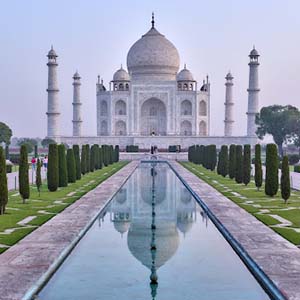
Preparing to Move to India
Employers may offer assistance to employees relocating to India for work. This assistance can include help with acquiring documents such as passports, visas, and other permits. It’s important to take advantage of any support offered to ensure that you and your company comply with all laws and your unique requirements are met. For the most up-to-date information on passport, visa, and work permit requirements, consult your country’s embassy in your destination country. Other resources include the Bureau of Indian Immigration, Indian Government Visa and Fragomen Immigration Services websites.
Passports
As when travelling to any country abroad, every individual travelling to India will need a passport. Passports should be checked, as they must be valid for a period longer than the intended stay in India, to avoid any mistakes or issues with delays.
Visas
A visa is proof that you have been authorised by a country’s government to enter the country. They are each provided for a specific amount of time and for a specific purpose, so it’s important that you do your research into the different types of visas when moving to India. Visas can be separate documents, stamped in passports, or awarded digitally. Work permits may also be required if relocating to India for work purposes.
Fortunately, the process of Indian Immigration can be fairly simple when relocating for work. Your employer, if in India, must complete an online application at the nearest Indian consulate, ensure all relevant paperwork is completed, and then submit the physical visa application for an Employment Visa type – E. Visas for Employment and for accompanying family members (Visa type X) should be granted within a week of the application being submitted. Once in India, you can extend your visa every year with no online processes to be delayed. Upon arrival in India, you and your family must register with the local police force to acquire a residential permit. This will be needed to open bank accounts and other bureaucratic processes.
Risks to the Immigration Process in India
While the process of moving to India can be hassle-free, there are certain risks that can jeopardize the move. You must ensure that these things are not neglected when you are preparing to relocate:
- Registration Delay: If you fail to register with the authorities within 14 days of arrival, there could be financial penalties and issues with leaving the country.
- Tax Filing: To successfully extend your visa, it’s vital that tax returns for the previous year are filed and tax should have been paid up to the date.
Visa Type: It is common that individuals arrive on business visas where they should be on employment visas – it’s important to check the type and conditions of each visa type. Also note that the recent decriminalisation of same sex partners means dependent visas for same sex partners are not yet possible. This is a developing process in India, so stay up to date before acquiring a visa.
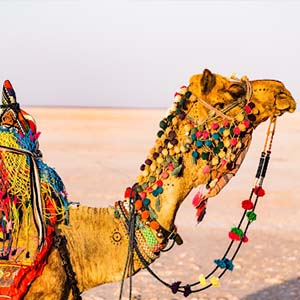
Customs Requirements in India
When moving to India with a shipment of household items, there are documents required by Indian customs to allow entry of these items. These may differ depending on your moving company, so make sure to do your research before travelling to India. Indian customs may require:
- Transfer of residence letter from your company confirming minimum 1 year working in India
- Reserve Bank of India permit
- Passport and correct visa
- Airway bill or bill of loading
- Certificate of insurance
- List of items in shipment
- Indian customs baggage declaration form
Electronics, such as laptops, video equipment, and household appliances, intended for personal use can be imported duty-free. You should supply a detailed inventory of all electronic items and pack them separately in the case that they require inspection. Other personal items, such as clothing, tableware, and books, may also be imported free of duty charges granted they are already owned and at least 6 months old. Household items and personal effects are generally allowed duty-free entry to India within 1 month of your arrival.
Restricted and Prohibited Items
Importing and exporting Indian rupees, the currency of India, is prohibited. Amounts of cash exceeding US$5,000 or equivalent must be declared at customs. The following items are also prohibited:
- Duplicate electronic equipment
- Unlicensed guns or ammunition
- Pornographic materials
More information is available from the Central Board of Indirect Taxes and Customs.

Moving to India with Pets
There are a number of considerations to take into account before deciding to take your pet to India. The climate in most parts of India is hot, hotter than the UK’s climate. You should consider how well your pet will cope with hot weather as well as how well they will be able to adapt to the climate. Older pets or those with some illnesses could suffer in the warmer climate and become prone to skin rashes. Smaller appetites and larger thirsts should be accommodated.
Dust, dirt, and disease-carrying insects are common issues in India. If you allow your pet outside, you should bathe and treat your pets for fleas and ticks more frequently. Flies, parasites, and stray dogs and cats can also pose issues. Many pet owners in India tend to keep pets indoors to avoid these unpleasant problems, so take this into account when considering your situation.
Though pet supply shops exist in most major cities in India, your selection of items such as food, grooming, and training items will be limited. It’s recommended to stock up in your home country and ship all necessary items for your pet care. Veterinary practices are available but typically do not provide the quality of care we are used to in the UK, with often inconsistent temperatures for vaccines and often less sterile surgical environments.
Import Requirements for Pets
‘Pets’ are considered to be dogs and cats only. Foreign travellers may only import two pets each, and to import other animals, such as birds, rabbits, fish, or hamsters, you must apply through the Directorate General of Foreign Trade. When importing pets, the following are required:
- Health Certificates: Must be issued by a licensed and accredited veterinarian and endorsed for export. This certificate must confirm the absence of Aujesky’s disease, Leptospira icterohaemorrhagiae, and a negative test for a tuberculin test, as well as state that the pet has originated from an area free of these diseases.
- No Objection Certificate (NOC): Obtained from Animal Quarantine and Certification Services (AQS) at least 15 days prior to travel. A local agent is advised.
- ISO Standard 11784 microchip: If your pet’s microchip is not compliant, you must attach its own scanner to your pet’s crate.
- Import Permit: This may be obtained at the time of entry at the destination.
- Rabies Certificate: This should accompany the health certificate. Rabies certificate should be issued by your pet’s veterinarian and prove that the rabies vaccine was administered no more than 180 days but more than 30 days prior to the flight. Blue ink and a legible signature are required, as well as duplicate certificates.
There are no quarantine requirements for pets arriving from countries with little to no rabies risk, including the UK, as long as all above requirements are met. More information is available from India’s Animal Quarantine & Certification Services.
Moving to India from UK
You can move to India from the UK if you have been approved for a long term visa. Make sure you apply before arrival as you may not be eligible to stay for a long period without one. If you plan to work in India you must also obtain a work permit before travelling, which can usually be arranged by your employer but make sure you check this.
Taking a Vehicle
When considering whether to take your vehicle to India, it’s important to note that some employers place weight or volume restrictions on household shipments. This could limit the size of objects being transported too. Check with your employer that there are no such limitations before including your car in this shipment.
Cars for personal use may be imported granted that they have been in the owner’s possession before shipment. They must also arrive in India within 6 months of the owner’s arrival. Cars older than 3 years are not permitted to be imported, and cars must have right-handed steering and have a km/h speedometer. Those working in India for more than 1 year must provide proof of their assignment from their employer and obtain customs clearance from the chief controller of imports in New Delhi. Those on 6-month assignments can make arrangements through their national automobile club.
Vehicles may be assessed for duty based on listing price. New vehicles’ import duties are currently assessed at a rate of 85% but can be up to 180% for used vehicles. Importing a car will require the following:
- Valid passport and visa
- Manufacturer’s invoice
- Customs Clearing Permit or Import License
- Insurance Policy
- Vehicle Registration Certificate
- Vehicle Keys
In addition, the owner must furnish a bank bond to the Import Control Authority agreeing not to sell the car for a specified period. More information on importing vehicles is available at your nearest Indian consulate or via the Central Board of Indirect Taxes and Customs.
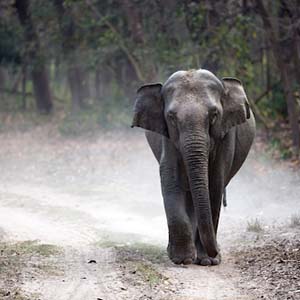
Financial Services in India
If you’re moving to India, you will benefit from their extensive banking infrastructure. International, national, and local banking services are available to expats living in India. Services are uncomplicated, meaning expatriates can navigate them easily and many choose to have a local account for living expenses. Indian and international banks issue Credit and debit cards locally, offer many other services, including personal loans, insurance, financial advice, and more. Online and mobile banking are also available, with some even offering ‘watch banking’ for use on smart watch technology.
Currency and Exchange
The rupee (INR, ₹) is the currency used in India and you will be using this daily if you move to India. Paper notes are common and are available in denominations of ₹5, 10, 20, 50, 100, 200, 500 and 2,000. Size is usually relevant to the value of the note, except the ₹20 note, which is larger than the ₹100 and 200 bills. Coins are in circulation with denominations of ₹1, 2, 5, and 10. The terms lakh, meaning 100,000, and crore, meaning 10 million, are commonly used in India.
Exchange services are offered by authorised foreign exchanges, such as banks, in all major cities in India. Foreign travellers are advised to exchange money only at banks and authorised exchanges to avoid counterfeit notes. You should also keep all receipts of foreign currency exchanges to reconvert rupees upon exiting the country. International airports also offer foreign exchange services. There is currently no limit on the amount of foreign currency permitted to enter India but amounts over a specific limit must be declared upon entry.
Finding a Home in India
For people moving to India for a specific period of time, it is recommended to rent housing in India rather than to buy accommodation. This is on account of many reasons, including the difficulties foreigners will face when wanting to legally own land in India. Despite high rents and low availability of rental housing in some cities, this is preferred by most expatriates over the responsibility of owning property.
With the abolishment of the Caste system and a developing economy in India, there is an emerging middle class in India. As a result, there has been a housing boom. There is much more high-quality housing available in the country than ever before. Despite this, you should be prepared to be persistent and patient when searching for suitable accommodation. When confronted with decorative disrepair or distasteful interior finishing, negotiations with the landlord may secure some type of remodelling before any deal is made. Security deposits can be higher than other countries, but this will depend on your location.
Gerson relocation offers a professional international home search service to find the perfect accommodation for your time in India. Get your free quote today.
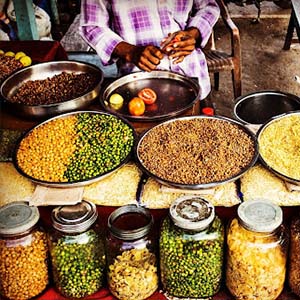
Housing Areas
The following areas are most commonly chosen by expatriates moving to India. While other areas are available, these will provide conditions most akin to typical Western standards: pollution, noise, and congestion may pose problems, and commutes to work or schools may be too far. You should always explore the area before choosing to move there.
Bangaluru (Formerly Bangalore): Housing in Bangaluru is increasingly scarce and expensive due to the number of multinational companies being drawn here. Interesting apartments and houses are available to those with good timing. It’s important to note that water shortages and power outages are both common, so it’s recommended to obtain a generator or Uninterrupted Power Supply (UPS) to protect sensitive electronics. 3 months is the typical wait to find adequate housing here.
Leases typically run from 2 or 3 years in Bangaluru, with periods lasting 11 months. Escalation after the first period is around 5-7%, with higher escalation following the second period. Security deposits are normally equivalent to 10 months’ rent and rent is paid monthly on the 5th of every month.
Chennai (Madras): The number of expatriates living in Chennai is growing all the time. There are now a number of residential neighbourhoods that are popular with expats and the wealthier members of Indian society also tend to live here. Popular areas include Boat Club, Kotturpuram, Poes Garden, and Wallace Garden.
Rental leases in Chennai normally last 3 years, renewable every 11 months. A refundable deposit is required equivalent to 10 months’ rent and rent is paid monthly on the 1st of every month. 3 months’ notice is typically required for early termination of the lease.
Mumbai (Bombay): Housing in Mumbai is some of the most expensive and difficult to find in the world. Rental properties are scarce, but more are becoming available in recent years. Employers transferring employees to India often obtain long-term leases on apartments for new arrivals to India. Most accommodation here is made up of apartments with 2, 3, or 4 bedrooms. Refurbishments are often required to bring accommodation up to Western standards.
Rental rates for property in Mumbai vary depending on the capital value of the property being rented. Rent is normally paid either on an Advanced Payment Basis or a Deposit Basis – the latter requires the tenant to pay a large deposit equivalent to 20-40% of the capital value of the property and correspondingly lower monthly amounts in rent.
New Delhi / Delhi: There are many residential neighbourhoods that are preferred by expatriates in Delhi, typically in the southern half of the city. There are usually shops and pharmacies in residential areas. Housing in Delhi can range from minimal square boxes to attractive bungalow-style buildings to new builds with staff quarters and garages. Many Delhi homes are very luxurious with marble floors and well-equipped bathrooms and kitchens. Central air conditioning or heating are typically not installed. Most foreigners use their own cars, taxis, or hired cars with drivers when living in Delhi.
Lease periods typically last 3 years but can be negotiated to suit your requirements. A deposit equal to 6 months’ rent is typically paid to the landlord but finer quality accommodation often requires the full three years’ rent in advance. These terms can usually be negotiated, and you are advised to consult with your real estate agent when negotiating.
Getting around in India
Many people moving to India will require a vehicle while working and living in India to travel to work, schools, and sometimes even shops and other services. While public transport can be plentiful in some areas, the overcrowding, unreliability, and lack of English-speaking operators mean that it is generally not recommended for expatriates.
People living in cities can often get by relying on taxis and rented cars with drivers. Expatriates with families almost always have their own car and in many cases a driver. Vehicles drive on the left, like in the UK, and newcomers should drive defensively in India. Congestion is common and vehicles are often in poor condition. There are normally road signs with standard symbols or English near cities, however in less metropolitan areas English and standardised signage is less common. The Federation of Indian Automobile Associations is a good source of more information.
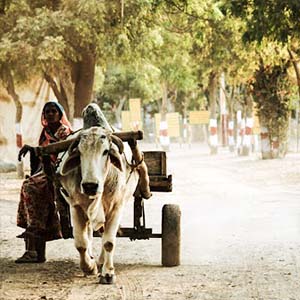
Indian Driver’s License
If you wish to drive in India, you must obtain an Indian driver’s license. To do so, you must acquire an application form from the Regional Transport Office (RTO) of the area where you will live. Submit this with 3 photographs, proof of age, proof of residence, and the relevant fee. You should also have a valid home license or International Driving Permit and medical certificate when you visit the local RTO office. Processing can be time consuming and frustrating so go with patience and plenty of time. Prior to the driving test you will receive a Learner’s License, then a permanent license is issued if you pass the test.
Driving Conditions
When moving to India, driving is not an easy task. Roads are shared with all types of vehicles, animals, and many other obstacles. The unwritten rule is that smaller yields to bigger, however it’s also a general rule that the one with the most to lose, such as more expensive vehicles, will yield. As sacred animals to Hindus, cows will always have right of way. You should ensure that your brakes and horn are in working order. Horns are used in India to signal that they wish to pass you but also to signal that they are approaching from the rear. Don’t hesitate to use your horn when driving in India.
A congested Indian road is best navigated carefully to avoid accidents, so you should allow plenty of time to reach your destination. Driving after dark is considered dangerous and poor lighting or power failures make navigating unfamiliar roads even more difficult. Dust can reduce visibility in the dry season while roads may become flooded in the monsoon season. If you plan to drive extensively throughout India, it’s recommended to source a 4-wheel drive vehicle. Parking can pose a major problem in most areas.
Vehicle Insurance
It’s compulsory to obtain third-party insurance in India, normally provided by a local insurer. Due to difficult driving conditions and high accident rate, you should carry additional coverage to protect yourself. Insurance claims take a long time to be processed and you can expect waits up to 12 months for settlement. Premium discounts can be awarded if you are able to show proof of accident-free driving from your most recent insurance agency.
Public Transport in India
Taxis, buses, ferries, metro rail systems, three-wheeled scooters, rickshaws, and horse-drawn carts are all available as part of the public transport servicing India. However, in cities, it’s recommended that foreigners travel by auto rickshaws, taxis, or hire cars with drivers. Long distance travel is well served by rail connections and domestic flights in India.
Buses: Bus services can vary hugely in quality across companies and cities. Bus routes are typically displayed on the front and rear of buses. Vigorous signals are usually required to board buses or jump aboard as it is moving. Some buses have separate sections for women passengers.
Ferries: Ferry services operate across the Ganges River in Kolkata, connecting various cities in surrounding areas. Howrah, Bagbazar, Ratanbabur Ghat, Kutighat, Belur, Dakshineshwar, and Bichalighat are all served by Ferries. There are no ferries in operation in monsoon season.
Rickshaws and Scooters: For short trips, Rickshaws are a cheap form of transport, available with both bicycle power and motor engines. They are common in cities, normally outside of the city centre. Three-wheeled scooters are known as ‘mosquitos’ in New Delhi and are both cheap and noisy. They are not very comfortable but are used by some foreigners for short trips.
Metro Rail: Due to high levels of congestion in India’s cities, the government is investing on ongoing projects to improve mass transit in the cities of Kolkata, Chennai, Delhi, and Mumbai. Trains in some cities are reportedly overcrowded but there are public transport options for tourists and commuters in large cities.
Trains: India has an extensive rail service, made up of thousands of kilometres of track. Air-conditioned sleeping-car services operate between large cities, and it is the main method of long-distance travel. Taking the train from Delhi to Kolkata or Mumbai, a distance of 1,440km, takes about 18 hours. There are multiple classes on trains; air-conditioned first class is available on some trains; regular first class is comfortable but hot and dirty; second class is quite crowded, and a generous tip for the train’s porter will ensure a good seat on the train. Most stations accept major credit cards.
One Nation One Card: A new card was launched in 2019 intended to work on all transportation systems across India. It can also be used for tolls and parking fees, using the government supported RuPay system. It is a contactless card available from most banks and could be a credit, debit, or prepaid card.
Expatriate Community in India
India has a long history of foreign residents so there are a multitude of opportunities in place for social networking. There are large communities of expatriates from the USA, Britain, Canada, the Netherlands, France, Germany, Italy, Japan, Korea and Spain, which are fairly well integrated both in work and social environments. Aside from these communities, there are social and philanthropic clubs and organisations that are popular with expatriates from all over the world. Networking at work and at schools is also a good way to meet people.
Embassies of Western countries also have a tendency to sponsor events and clubs for their citizens while offering opportunities to exchange information about life in India. Meetings are typically held weekly to discuss topics or for talks and presentations on current interests.
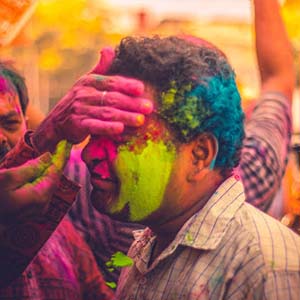
Social Life
The culture shock experienced when moving to India can be overwhelming, with India’s diverse and complex culture being a lot to handle. Just prior to or just before your relocation, you may find it useful to spend time with colleagues or friends who have spent some time in India to get some tips or advice for navigating and adjusting to living there. Expatriate organisations or classes can help put you in touch with others in the same situation, which can be very comforting and useful.
Sports clubs and social clubs are also a great way to make local friends. Active sports, such as trekking, water sports, tennis, and golf, are all very popular in India and there are plenty of opportunities to join clubs dedicated to these sports. In addition, bringing some formal clothing to India is a great idea in case of cultural events, as attending and getting involved with these are sure to create new connections and friendships. Indians are normally very friendly people, though often shy, and are very willing to befriend new arrivals to their country.
When relocating with Gerson, you are never alone. Our settling-in services ensure that you are fully settled in your new location, and our cultural training services will leave you fully equipped to embrace life in your new home.
Religious Worship
Religion has and continues to play a large role in Indian society and there are many religions that are observed throughout the country. Some services are conducted in English, particularly in Delhi. When visiting temples and mosques there is certain etiquette to be followed:
- Before entering temples, you should ask permission first and remove your shoes.
- Leather items are sometimes not permitted inside temples.
- At some temples, hands and feet should be washed before entering.
- When visiting a mosque or Sikh temple, women should dress modestly and cover their heads and hair.
To find suitable religious services for you and your family, you should consult your country’s embassy or consulate.
Greetings and Terms of Address
When moving to India from the UK, it’s important to observe correct etiquette in conversation. When greeting others, you should greet the oldest, or most senior, person in the group first. In general, whether in social situations or business, you should always show respect to elders or those in more senior positions. It is impolite or harsh to say ‘no’, so you should try to not directly refuse invitations.
A common Indian greeting is ‘namaste’; bring your palms together about chest high and incline your head slightly. Men may shake hands with other men and women may shake other women’s hands, but a man should wait for a lady to extend her hand first before shaking her hand. For religious or personal reasons, some Indians will prefer not to shake hands or touch others at all.
Formal titles are typically used to show respect and it is common practice to ask permission to take your leave.
Gestures and Body Language
As there are many religions in India, you should be aware of the taboos in each culture. For example, when meeting with Muslims, you should not show the soles of your feet or touch food with your left hand. In general, your feet or shoes should never touch other people and an immediate apology is necessary. You should also never point your feet at another person. You should also avoid touching other people’s heads as this is considered the temple of the soul.
When you are talking, it is quite normal for other people to shake their heads to show that they are listening to you. In South India, moving the head from side to side means ‘yes’ rather than ‘no’. When in conversation, you should avoid prolonged eye contact, but don’t look away when others are speaking. Excessive hand gestures, loud voices, whistling in public, and public displays of affection are all considered impolite.

Table Etiquette
In traditional homes, women and men can be expected to be seated separately and will sit cross-legged on floor mats and low tables. Guests and men at the meal will be served first, then children, and then the women. You should always wait to be served and not serve yourself. You should never refuse food, but you can always accept small portions and leave it on your plate. As cuisine differs so much in India, your host will not be offended.
Unless told otherwise, observe the rule that you eat with your right hand. The left hand is considered unclean, but you may pass food dishes with your left hand. There may even be hand-washing ceremonies before and after meals, sometimes even mouths. This could vary depending on your host, but it is generally ceremonial purity rather than clean or germs.
Another point to note is that Indians will not play ‘please’ or ‘thank you’ when asking for or giving something. To thank hosts for a meal you should praise the food and you may reciprocate with an invitation to your host. Dinner is typically the last event in an evening of entertainment and could be served as late as 11pm.
Alcohol and Drinking in India
Most Hindus and all orthodox Muslims will not drink alcohol at all. In Gujurat, alcohol is not consumed, and you should observe this law when there. There are also certain days in the year in Delhi when restaurants and bars will not serve alcohol.
Tipping in India
In many situations, it is normal to tip in India, with the standard amount being 10% of the bill. Hotels and restaurants often include service charges, but waiters and room service employees can be given cash tips. If you are staying with a family with household staff, 10 rupees a night or 50 rupees for a weekend is a sufficient tip. Taxi drivers are not tipped customarily but you can do so if well-earned.
Our relocation services can take care of everything, from visas and immigration to your home search.
Interested in information on another country? Take a look at our other International Relocation guides.
Great customer Experiences start here
Very pleasent and helpful. Nothing too much trouble.
Mr M H moved from London, UK to Toronto, Canada
Very helpful and patient even when things got packed that we had to get out again!
Mr M E moved from Enfield, UK to Dorset, UK
Thanks to Graham, Nick and the entire crew!
Mr C D M moved from UK to Singapore
Friendly and helpful crew.
Ms T W moved from USA to Cambridgeshire, UK
